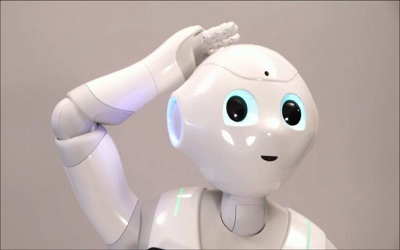PTE考生目前最大的问题之一就是练习题缺乏。除了有限的基本官方书(PLUS,Testbuilder, OG)之外
就没有题了。很多英语基础不是很扎实的同学很难找到练习材料。悉尼文波雅思PTE培训学校专门为澳洲,尤其是悉尼、墨尔本的PTE考生准备了适合PTE听力阅读练习的科学60秒。各位PTE同学可以练习PTE听力中的summarise spoken text和PTE口语中的retell lecture,PTE听力口语-科学60秒-Frosty Moss练习记笔记技巧和复述。废话少说,下面开始:
Water laced with heavy metals—like the drinkingwater in Flint, Michigan—can be stripped ofcontaminants using chemicals, filters, membranes,even electric current.
But now researchers say they’ve created what couldbe a cheaper, more effective solution:
a fleet of microscopic, self-propelled, aquatic robots.
Each one the size of just 10 lined-up bacteria—so tiny that a billion will fit in a syringe.
Each tube-shaped microbot is a sandwich of three materials.
A graphene outer layer, which binds to heavy metals.
A middle layer of nickel, which gives the bots magnetic polarity, so they can be pulled throughwastewater with magnets.
And platinum inside—for propulsion.
Just add a bit of peroxide to the wastewater, and it’ll react with the platinum to form water andoxygen bubbles, which propel the tubes along.
In an hour, a swarm of 200,000 bots scavenged 80 percent of the lead from three millimeters of tainted water.
And the researchers estimate that it costs only about five cents a liter to do so.
The findings are in the journal Nano Letters.
The researchers envision the bots as a portable solution for small companies—they’d treattheir water onsite instead of carting it to a treatment plant.
And after the robots do the rounds, the heavy metals can be stripped away.
Meaning companies can reuse the heavy metals, and, ultimately, keep them out of ourwaterways.
Microscopic:[ˌmaɪkrəˈskɒpɪk] adj.微小的
Aquatic:[əˈkwætɪk] adj.水生的
Bacteria:[bækˈtɪəriə] n.细菌
Syringe:[sɪˈrɪndʒ] n.注射器
Polarity:[pəˈlærəti] n.极性
propulsion:[prəˈpʌlʃn] n.推进
envision: [ɪnˈvɪʒn] v.想象





